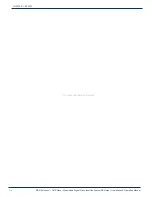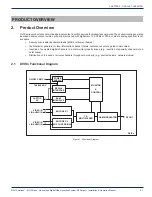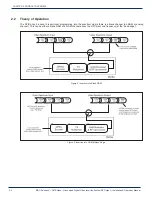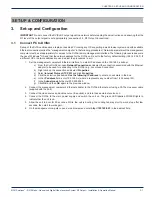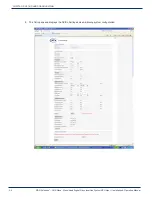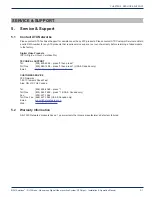
MDU Solutions
®
– DVIS Nano - Nano-sized Digital Video Insertion System RF Output – Installation & Operation Manual
3-3
CHAPTER 3: SET-UP AND CONFIGURATION
CHAPTER 3: SET-UP AND CONFIGURATION
3.2 Configuration
All system parameters are set on the DVISn Settings screen.
NOTE:
Where only certain values are allowed, the values are listed in a drop-down box. Parameters that can not be changed
are greyed out.
3.2.1 DVISn Information
Product ID:
Serial number of the unit.
MAC Address:
A MAC (Media Access Control) address is a unique identifier assigned to network
adapters or network interface cards (NICs) by the manufacturer to uniquely identify
them on a LAN.
3.2.2 DVISn Setting
QBA Enable:
This function is required when DVISn signals are sent to some legacy STBs.
TS Id:
A transport stream is a cable or RF transmission format that allows multiplexing of
digital video and audio using a strict protocol that employs packet-based multiplexing.
A Transport Stream ID is a number unique to each transport stream that identifies its
origin (1-65535).
DVISn Software Version:
The version of the firmware file currently used by the DVISn.
RF Settings
RF Frequency:
The RF frequency output range is 57 to 860 MHz, entered in kHz (57000-860000)
without decimal points or commas.
QAM Mode:
QAM (Quadrature Amplitude Modulation) is a method for encoding digital data in
which each combination of phase and amplitude represents a specific bit pattern.
Higher levels of modulation provide higher data capacity but greater sensitivity to
noise. QAM64 is typically used where system performance will not allow higher
modulation levels while QAM256 is used by most cable operators.
QAM Modulation Type:
QAM-B employs the framing structure, channel coding, and modulation schemes
defined in standard ITU-T J.83 Annex B for use in North America.
Signal Bandwidth/Symbol Rate:
Signal Bandwidth & Symbol Rate are fixed to selected QAM-B settings as per the
SCTE standard.
RF Level:
Radio frequency signal level (45-58 dbmV).
Interleaver:
Interleaving mode is I/J 128/1
Encoders
Encoder (port) Number:
DVISn units contain one or two encoders.
Input Video Standard:
The DVISn accepts video signals that conform to NTSC (National Television Systems
Committee)
Encoder Active:
The check box lets you switch each encoder on and off. The Encoder Active
checkbox must be checked in order for the port to perform any encoding action and to
allow changes to other settings as required. .
Output Parameters
MPEG-2 Video Rate:
MPEG-2 is a standard for a combination of lossy video compression and lossy audio
data compression methods that reduce storage media and transmission bandwidth
requirements. The video data rate is entered in kbps (1000 to 4000), without decimal
points or commas.
Video resolution:
Video resolution refers to the number of discrete picture elements (pixels) in each
horizontal line and the number of displayed horizontal lines in the picture (e.g., 720
pixels per line x 480 lines). Video resolution options are 720x480, 704x480, 544x480,
528x480, 480x480, and 352x480.
Brightness:
Allows modification of the video signal to increase or decrease brightness. There are
256 levels available (0-255).
Contrast:
Allows modification of the video signal to increase or decrease contrast. There are
128 levels available (0-127).






